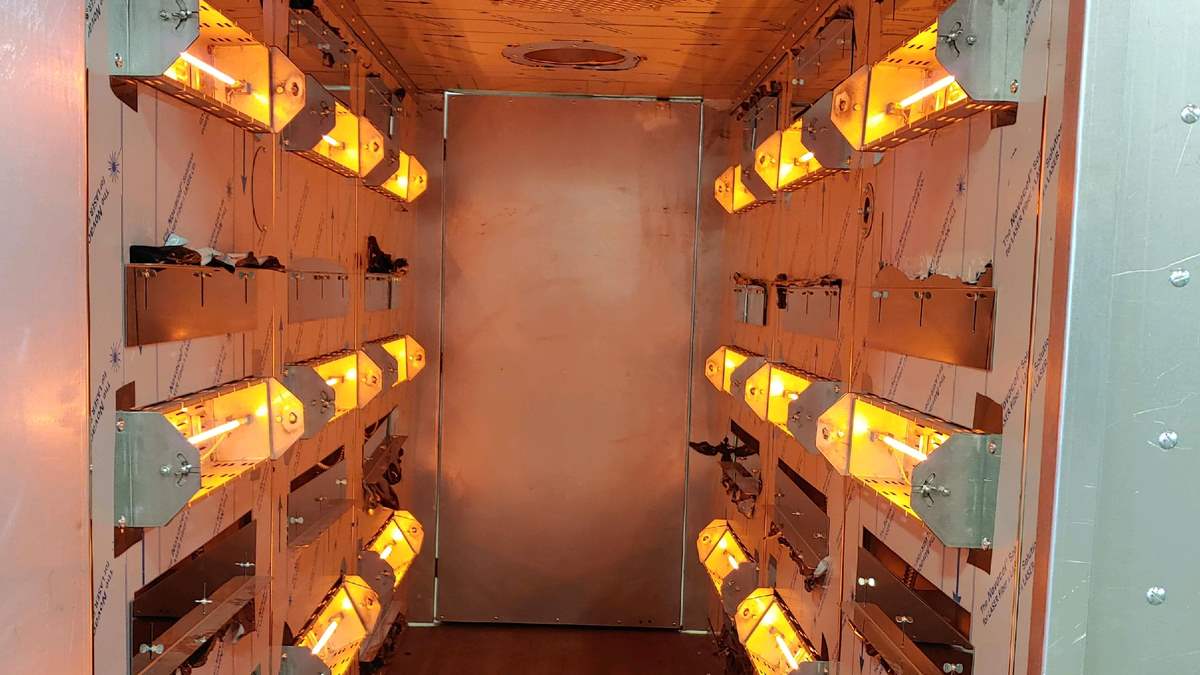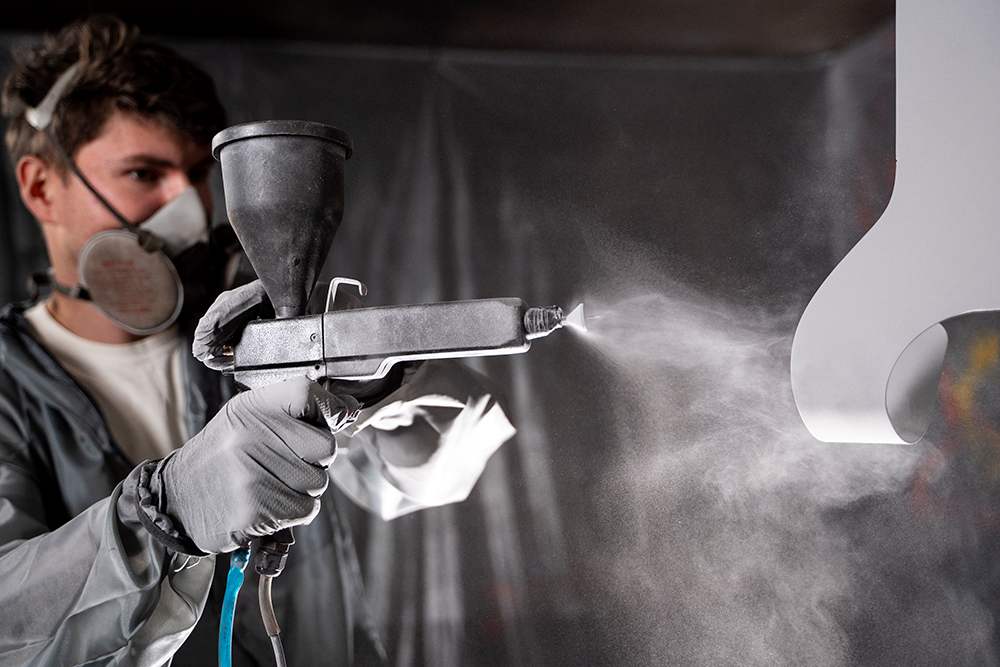To maximize the efficiency of your industrial powder coating operation, it’s crucial to ensure that your batch powder curing oven is performing at its best. The following information outlines items to consider that may help solve curing issues, improve your efficiency and increase the lifespan of your equipment.
Air Temperature And Airflow
One of the key factors that can impact the quality of your finished products is the air temperature and airflow within the oven. It’s important to note that temperature uniformity can vary from oven to oven. Be aware that ovens with ceiling ducts may be cooler at the floor level, while ovens with wall ducts may have cooler areas in the corners and close to the floor. It’s crucial that you regularly monitor temperature levels with an oven data recorder and keep a log of the results.
To prevent changes in the way the oven functions, it is essential to check for modifications in the movement of air within your building. Is there wind blowing into the structure from outside? Were building exhaust fans deactivated but vents left open? Are AC systems or heaters recently implemented causing deviations? Does opening or closing roll-up doors have any impact on the operation of your powder coating oven? By examining airflows within your environment, it becomes easier to identify issues affecting your oven’s performance, thereby increasing its efficiency.
Size Matters
First and foremost, make sure that your oven is the appropriate size for your project. Powder coating ovens can be customized to fit almost any dimensions but it’s crucial that the entire object you want to coat fits inside with ample space around it. In order to ensure that parts come out perfectly coated every time, it’s important to keep them away from walls, doors, ductwork and the ceiling. This is especially true during curing, as heated air is blown into the oven via ducts in the ceiling or wall, and sometimes both.
To prevent any issues with the curing process, make sure there is also enough space between the ductwork and the parts. If a part touches the oven’s interior, it can cause powder to rub off completely or flake away during curing. The finishing process requires that parts can’t touch the ceiling, ductwork or walls – nor can they impede door operation or rub up against them.
Transporting Parts
It’s also important to consider how parts will be carried in and out of the oven. Most parts are hung on rolling racks or carts, so there needs to be enough room for these racks once they’ve been hung with parts. If racks bump into the oven walls because of limited space inside it could cause powder applied become knocked off which hampers product quality.
Fuel Supply
When it comes to operating a efficient batch powder curing oven, another key factor is the fuel supply. Whether your oven uses LP or natural gas, changes in the fuel supply can cause issues that may be difficult to identify. Fuel supply changes could result from new construction near your facility, weather fluctuations, changes within your building, or altered usage patterns. For instance, if your oven was calibrated in the summer and gas demand increases during the winter months due to heaters or other gas-fueled appliances being used more frequently in your building or neighboring buildings, this can result in problems with your oven’s performance. Similarly, construction of high-demand buildings near your facility could also affect the fuel supply coming into your building.
Another issue arises when an increased number of heaters, steam units or additional ovens reduce the available amount of LP or natural gas fuel volume. Gas pressure and volume are not interchangeable – a situation may arise where you have the required pressure when the oven is idle but struggle with performance issues during cooking when high fire setting is applied due to inadequate volume because of a small regulator or supply line.
Production Systems’ design and engineering team will work with your company and coating suppliers to find the optimal oven design for your specific finishing requirements. Contact us to learn more.



